The Most Beautiful Public Gardens in Washington, DC
While most visitors to Washington, DC typically come to visit the national monuments, Smithsonian museums and the White House, they are missing a hidden gem. The most beautiful gardens in Washington, DC are often free to visit and present endless entertainment.
On the National Mall alone, there are five free gardens to explore. So if you don’t have a car, don’t despair. Read on for a list of my favorite public gardens in Washington, DC.
U.S. Botanical Gardens (USBG)
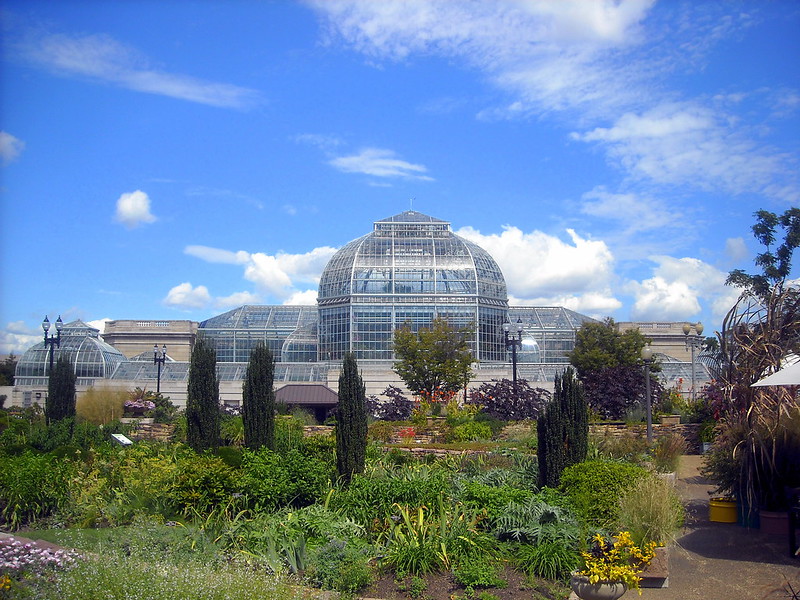
United States Botanical Gardens
The number one destination is the U.S. Botanical Gardens, which is located Maryland Avenue SW in Washington, DC. While the conservatory remains closed, visitors can roam outside in the gardens at the front and side of the museum.
To prepare for your visit, consider a virtual tour—both outdoors and indoors. During non-pandemic times, the USBG offered free guided tours.
The three-acre National Garden is enclosed within walls, like a secret garden. Unfortunately, pets are not allowed. It is home to the Regional Garden (featuring Mid-Atlantic plants) as well as the Rose Garden. Children will love the Butterfly Garden.
The nation’s First Ladies are honored with a special water garden. There is a fountain area to relax as well as stone boulders. Occasionally, educational programs occur in the Amphitheater.
Across the street on Independence Avenue lies Bartholdi Park. Not to be missed is the Bartholdi Fountain when visiting gardens in Washington, DC. There are tables and chairs for a quick al fresco lunch.
Follow the circular paths to explore hidden paths and groves of plants. A special delight for cooks is the herb garden where you can take in the fragrance of basil or oregano plants. The U.S. Botanic Gardens is included in the U.S. Capitol Complex.
U.S. Capitol Grounds
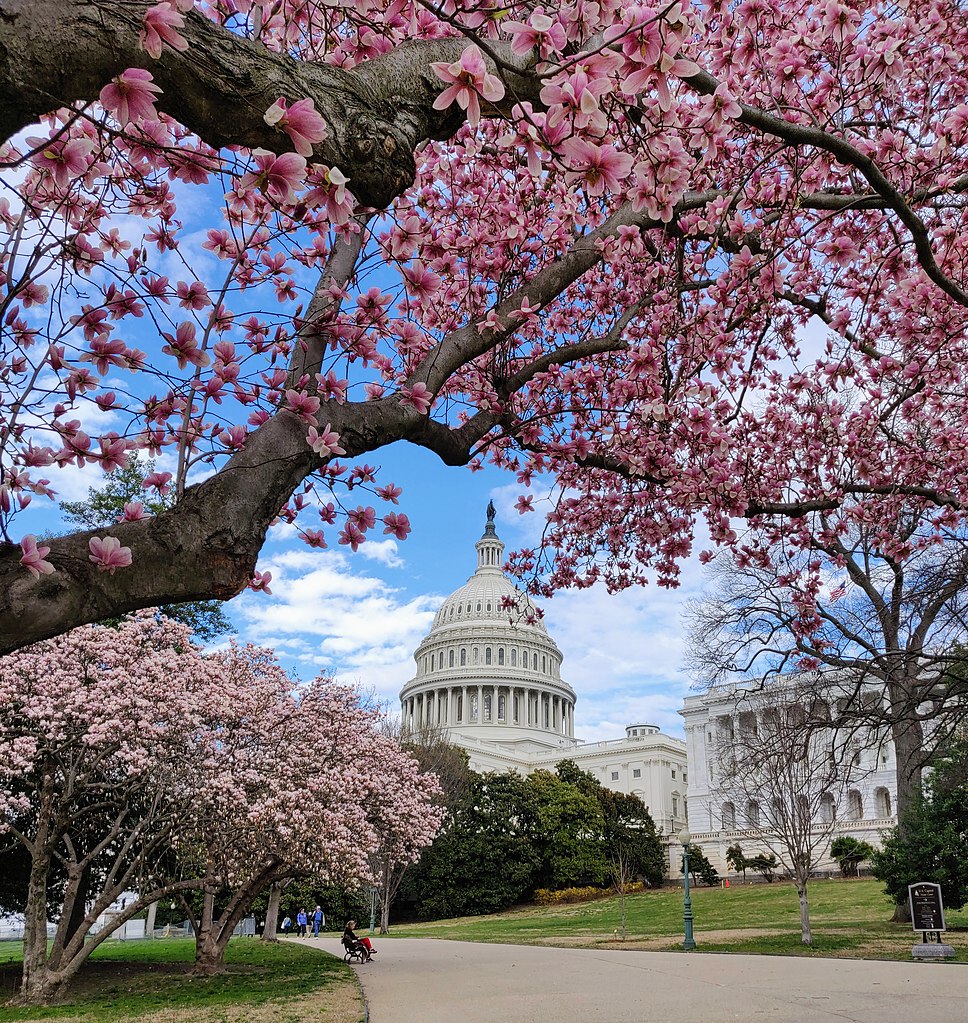
Magnolia Trees on the US Capitol Grounds
While not a traditional garden, the 58-acre U.S. Capitol Grounds is home to the most extensive array of trees in the Washington DC area.
Landscape architect Frederick Law Olmsted designed a park-like setting in 1874, which featured curving paths. He removed 400 trees. His design included low border walls, decorative lamps, and a historic shelter for streetcar passengers.
A special delight is the red-brick Summerhouse, set on the slope of the West Front Lawn. In the spring, beds of tulips bloom near the structure.
A visitor could spend an entire afternoon walking around the paths encircling the U.S. Capitol building. According to the Architect of the Capitol, 65 of Olmsted’s original trees are alive today. His design featured native trees, including elms, lindens, buckeyes and oaks.
There are also groupings of evergreen near the base of the West Terrace of the Capitol. In addition, the Capitol Grounds now feature gifted, memorial and commemorative trees, including the 9/11 Anniversary Tree, the Anne Frank Tree and the Emmett Till Tree. Download a map at www.aoc.gov.
There are wrought-iron benches for a rest period. The Capitol Reflecting Pool is a perfect venue for lunch while you watch the ducks swim by.
Smithsonian Gardens
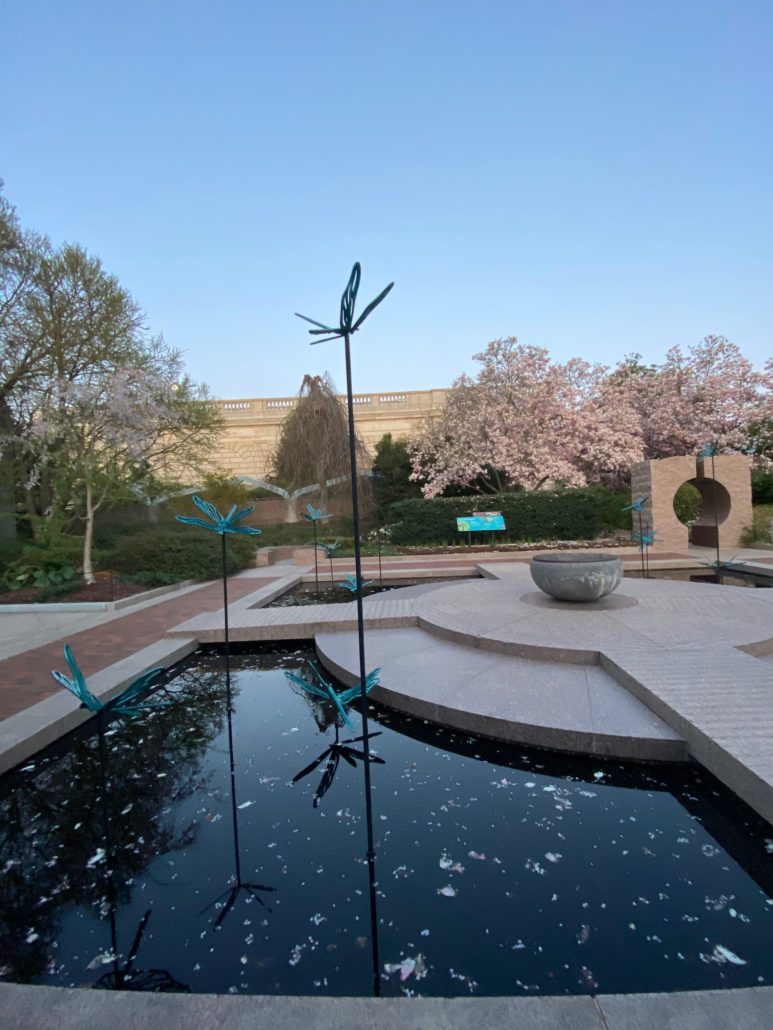
Smithsonian Moongate Garden
After visiting a Smithsonian museum, be sure to reserve time to relax at the rooftop Enid A. Haupt Garden. It opened in 1987.
Smithsonian Associates even offers forest bathing class in its Moongate Garden (for a fee). Designed by architect Jean Paul Carlhian, the Moongate Garden features an Asian design inspired by the Temple of Heaven in Beijing, China.
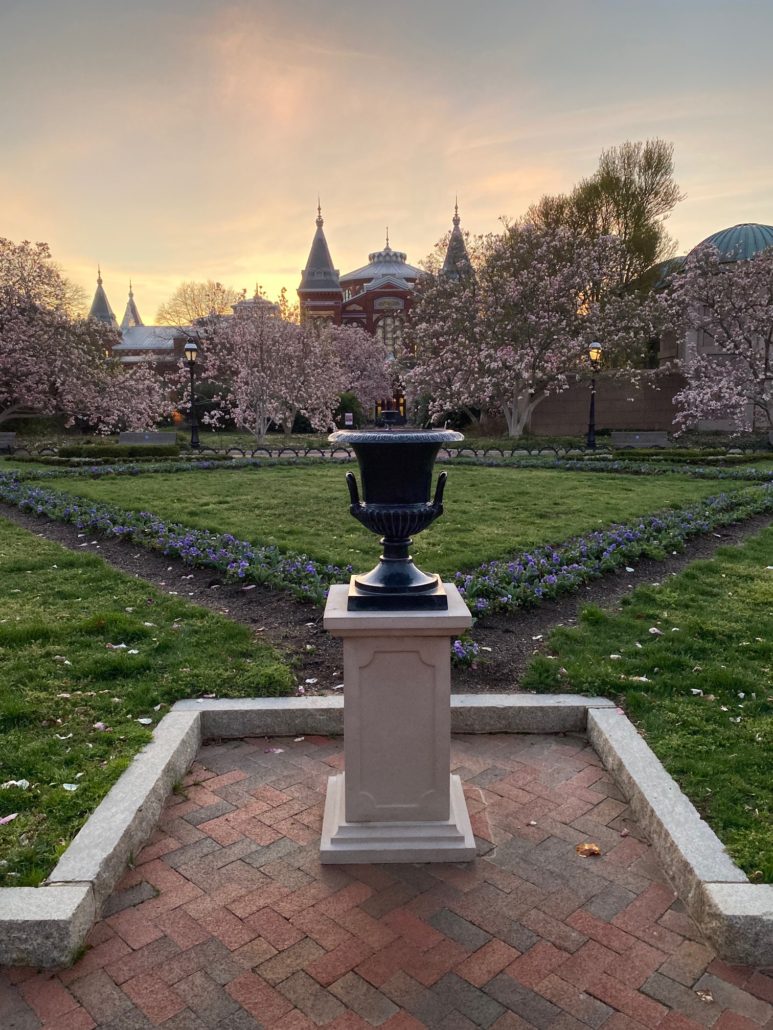
Enid Haupt Garden Parterre
The Haupt garden is conveniently located next to the old Smithsonian Castle. This 4-acre venue also features the Fountain Garden and the French-styled Parterre.
Wander down the brick paths, rest at the fountain or read a book while admiring the flowers. Pose in front of the Renwick Gates or the Downing Urn. This Haupt garden is actually standing on the roofs of the National Museum of African Art, the Arthur M. Sackler Gallery and the S. Rillon Ripley Center.
As you walk through the end gates, be sure to devote some time to the Kathrine Dulin Folger Rose Garden. The air is perfumed year-round with the four-season garden that includes fragrant flowers and interpretative signage.
Hirshhorn Sculpture Garden
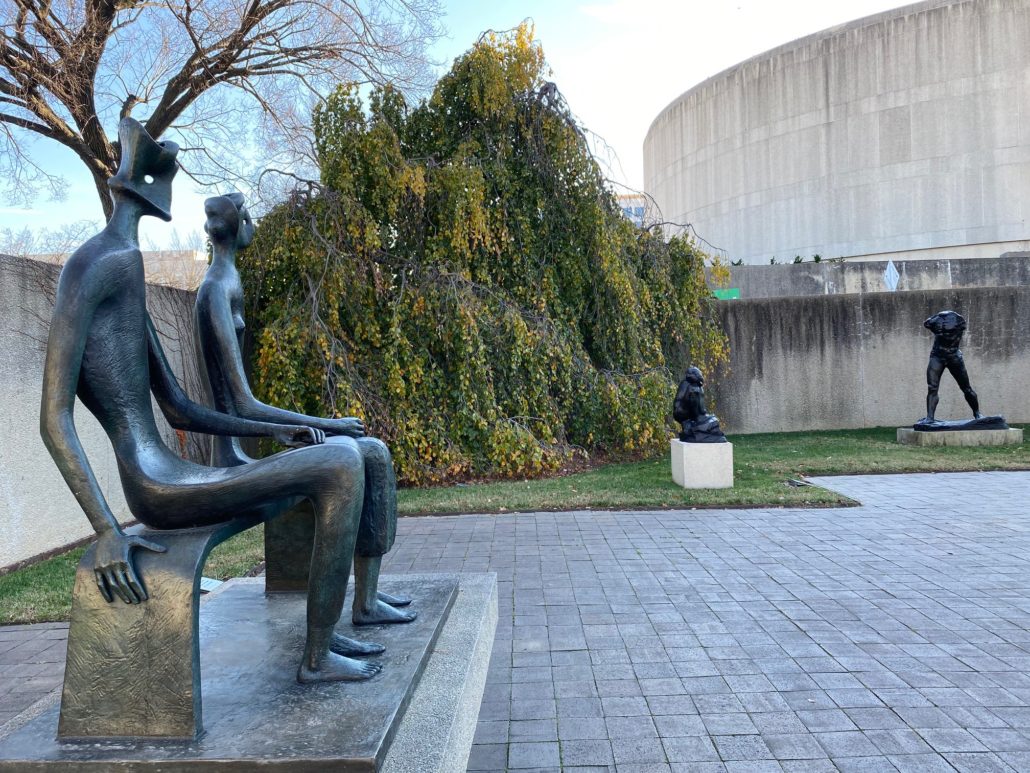
Hirshhorn Sculpture Garden
This open-air gallery is situated on the National Mall, with direct views of the U.S. Capitol on the left and the Washington Monument on the right.
The sunken sculpture garden is embedded 14 feet below the surface of the Mall. Visitors explore different rooms that divide up the open air gallery.
There are 30 works of arts ranging from abstract to modern. The plants provide a backdrop for the modern art. In addition, gardeners regularly change the plant palette to reflect the changing seasons.
Do not miss the Yoko Ono’s Wish Tree for Washington, DC. A special treat is to visit the Hirshhorn Sculpture Garden after a major snowstorm when the artwork is buried under a blanket of snow.
National Gallery Sculpture Garden
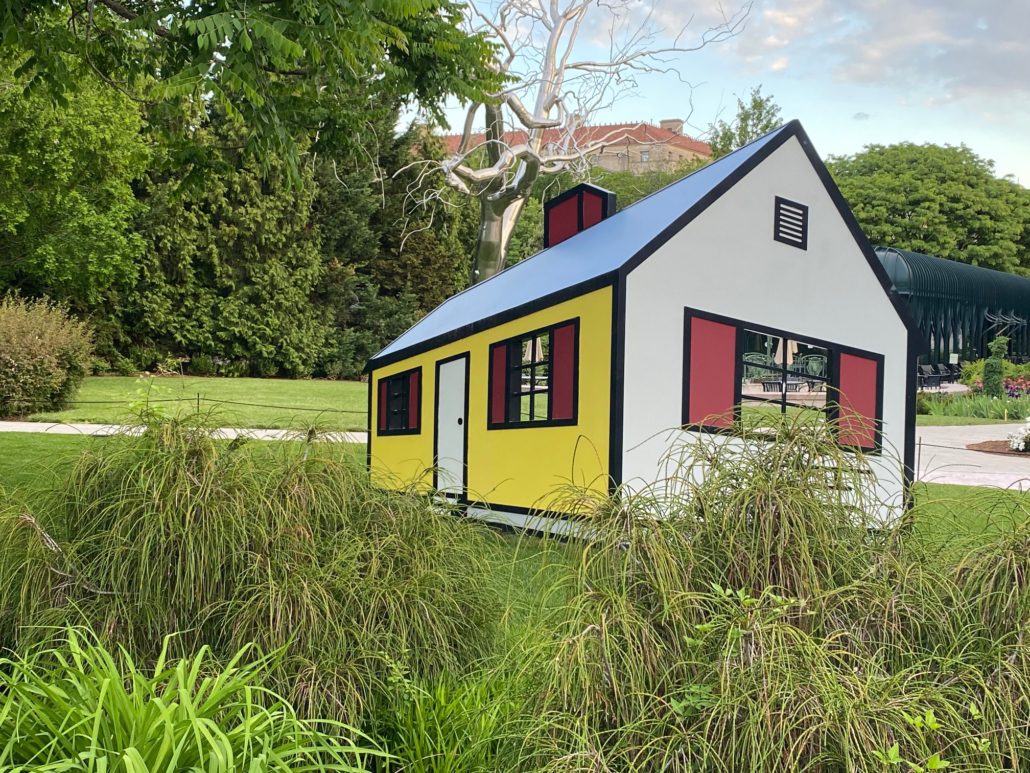
National Gallery of Art Outdoor Sculpture Garden
One block away, the National Gallery of Art “planted” its gated outdoor Sculpture Garden on the corners of Constitution Avenue, 7th Street NW and Madison Avenue NW.
The National Gallery of Art Sculpture Garden features lush plantings, trees and bushes as well as important artwork. Do not miss the secluded area which features Marc Chagall’s Orphee.
The 1969 stone and glass mosaic can serve as a meditation point. The 10-feet by 17-feet mosaic features characters from Greek mythology.
Other fun sculptures include Robert Indiana’s bright-red AMOR and Barry Flanagan’s Thinker on a Rock. Plan to visit around lunch or mid-afternoon to enjoy a meal at the Pavilion Café, which operates from 11 am to 4 pm.
The last two gardens in Washington DC will require a car, but they are definitely worth a visit.
National Arboretum
Located in NE Washington at New York Avenue and R Street, the U.S. National Arboretum is free to explore.
This is a must-see venue if visiting gardens in Washington, DC. It is open every day from 8 am to 5 pm, except December 25.
The 446-acre campus features 9.5 miles of winding roadways. Typically, 600,000 visitors explore each year. It is a favorite destination of dog owners.
Traffic peaks in the spring to see the Japanese cherry trees and the azaleas. Favorite flowers and bushes include azalea, boxwood, daffodil, daylily, dogwood, holly, magnolia, and maple.
The modern architecture visitors’ center includes a fountain and pool with aquatic plants. Also not to be missed are the Flowering Tree Walk, the National Herb Garden and the Asian Collections. The Arboretum is also home to the National Capitol Columns.
Dumbarton Gardens
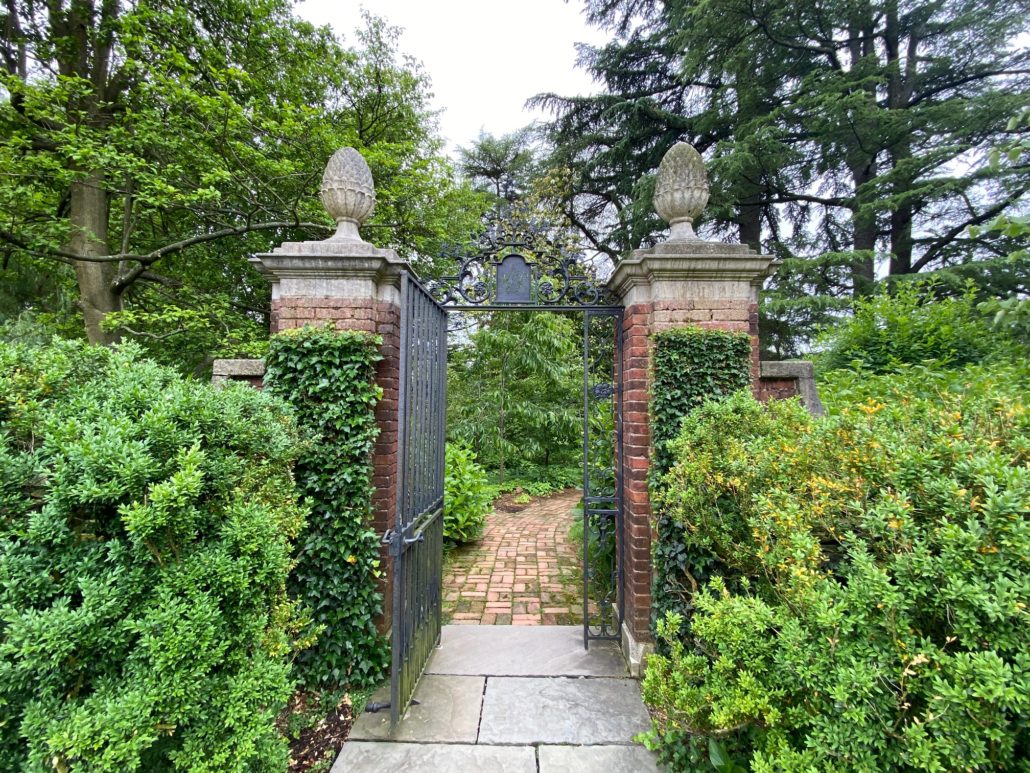
Dumbarton Oaks Gate
Dumbarton Oaks is a country estate sited in Washington, DC. Located in Georgetown, the Dumbarton Oaks mansion and surrounding gardens represent bliss.
Owned by Robert and Mildred Bliss, the estate was conceived as a retreat. The 1801 Federal-style home was purchased in June 1920.
The owners hired landscape architect Beatrix Farrand to design terraced garden rooms and vistas. The couple “gifted” the property to Harvard University in 1940 when it transitioned from a private estate to a research institute. Dumbarton Oaks is located at 1703 32nd Street NW.
About the author

Terri Markle
Terri Markle is a journalist who runs a communications firm and specializes in writing travel adventures for mature women. Based in Washington, DC, she writes extensively about the nation’s capital as well as hiking and walk adventures around the world. She has traveled to 34 countries in four decades.

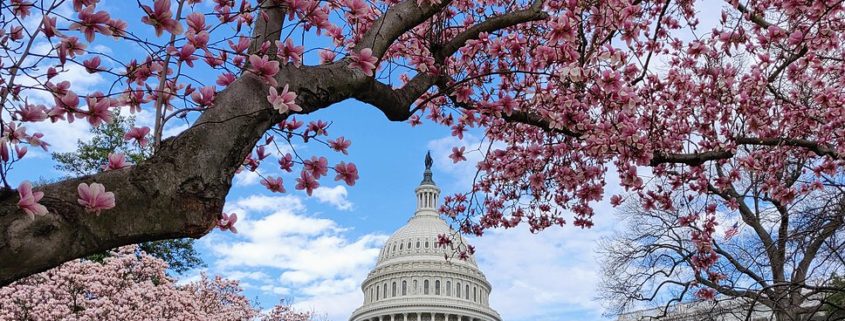
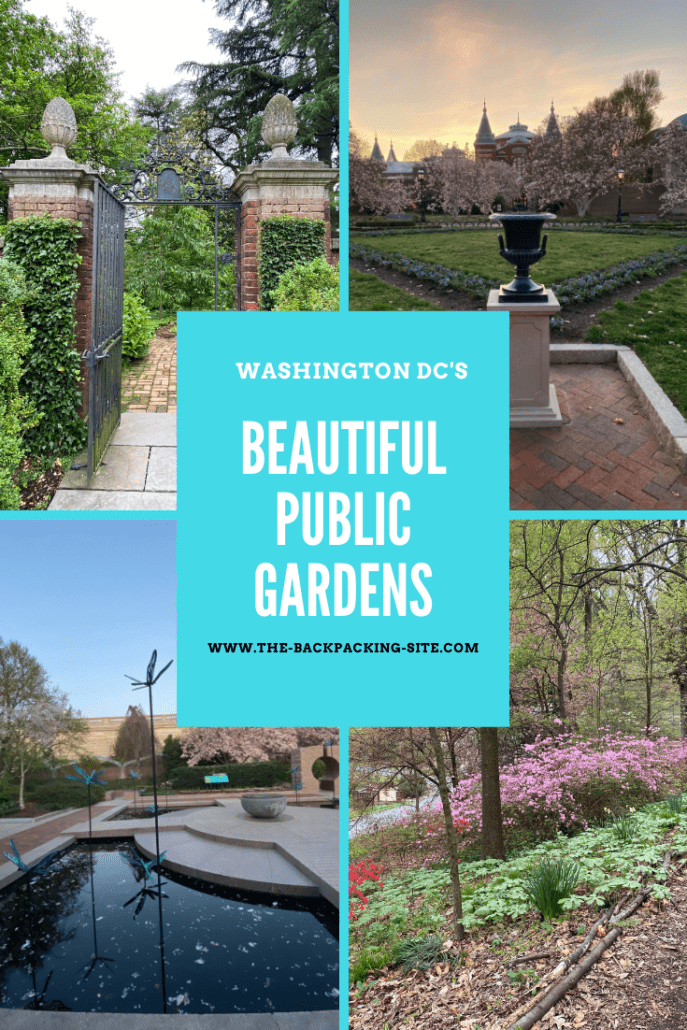
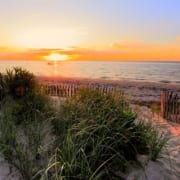
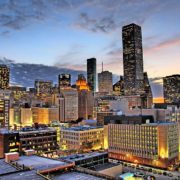
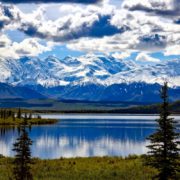
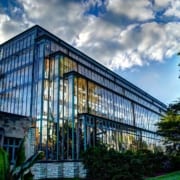

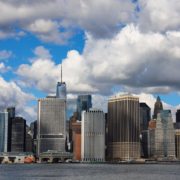


These gardens are wonderful to visit year round. In the winter, it is a thrill to see the snow-clad bushes and trees. I love these strolls. Few people are out. I bring my puppy so he can explore.